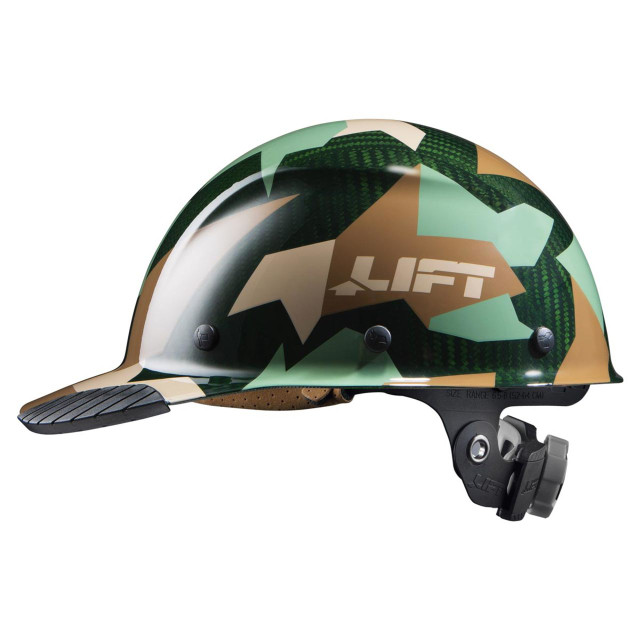Standards and certifications play a critical role in ensuring the safety and effectiveness of personal protective equipment (PPE), including lift hard hats. Over the years, lift hard hat standards and certifications have evolved to meet the changing needs and advancements in safety technology. In this blog post, we will explore four key points regarding the evolution of lift hard hat standards and certifications.

Introduction of ANSI/ISEA Z89 Standards:
The American National Standards Institute (ANSI) and the International Safety Equipment Association (ISEA) introduced the ANSI/ISEA Z89 standards to provide guidelines for the design, construction, testing, and performance requirements of protective headgear, including lift hard hats.
The ANSI/ISEA Z89 standards were first published in 1986 and have undergone revisions and updates since then to incorporate advancements in technology and address emerging safety concerns. These standards establish minimum requirements for impact resistance, penetration resistance, and electrical insulation of lift hard hats.
The standards also provide guidelines for the design and construction of suspension systems, chin straps, and other components of lift hard hats to ensure proper fit, stability, and comfort.
By conforming to the ANSI/ISEA Z89 standards, manufacturers of lift hard hats demonstrate their commitment to producing high-quality, reliable, and safe protective headgear.
Classification of Lift Hard Hats:
To further refine lift hard hat standards, the ANSI/ISEA Z89 standards introduced a classification system that categorizes lift hard hats based on the level of protection they offer.
The current ANSI/ISEA Z89.1-2014 standard classifies lift hard hats into two types: Type I and Type II.
Type I lift hard hats provide protection to the top of the head, protecting against impacts from falling objects and debris.
Type II lift hard hats provide protection to both the top of the head and the sides. They offer additional lateral impact protection, making them suitable for environments where workers may encounter hazards from different angles.
Both types of lift hard hats must meet the same performance requirements for impact and penetration resistance, regardless of the level of coverage they provide.
The classification system helps employers and workers select the most appropriate type of lift hard hat based on the specific hazards present in their work environment.
Certifications and Testing Procedures:
In addition to standards, lift hard hats also undergo testing procedures and certifications to ensure their compliance with safety requirements.
One of the prominent certifications for lift hard hats is the Occupational Safety and Health Administration (OSHA) certification. OSHA requires that lift hard hats meet the ANSI/ISEA Z89 standards to ensure the safety of workers in various industries.
To obtain certification, lift hard hats must undergo rigorous testing procedures conducted by accredited laboratories. These tests evaluate the impact resistance, penetration resistance, electrical insulation, and other key performance characteristics of the lift hard hats.
Certification labels or markings are affixed to lift hard hats that have successfully passed the testing procedures. These labels serve as visual indicators of compliance and provide workers and employers with assurance of the quality and safety of the lift hard hats.
By obtaining certifications, lift hard hat manufacturers demonstrate their commitment to meeting industry standards and ensuring the safety of workers who rely on their products.
Continuous Improvement and Future Trends:
The evolution of lift hard hat standards and certifications is an ongoing process, driven by advancements in technology and the need for enhanced safety measures.
Manufacturers are continuously researching and developing new materials and technologies to improve the performance and safety of lift hard hats. This includes the use of advanced impact-absorbing materials, improved suspension systems for better fit and comfort, and innovative designs to address specific hazards.
Future trends in lift hard hat standards may focus on incorporating smart technologies, such as sensors that monitor impact forces or detect hazardous gases, into the design of lift hard hats. These technologies have the potential to provide real-time data on worker safety and enable proactive measures to reduce risk and enhance overall safety.
Additionally, there is an increasing emphasis on ergonomics and worker comfort in lift hard hat design. Manufacturers are exploring ways to reduce the weight and improve the ventilation of lift hard hats to enhance wearer comfort, particularly for workers who wear them for extended periods.
In conclusion, lift hard hat standards and certifications have evolved over the years to ensure the safety and effectiveness of these essential pieces of personal protective equipment. The ANSI/ISEA Z89 standards provide guidelines for design, construction, testing, and performance requirements of lift hard hats. The classification system helps in selecting the appropriate type of lift hard hat based on the level of protection needed. Certifications and testing procedures ensure compliance with safety requirements, and continuous improvement and future trends focus on incorporating advanced technologies and enhancing worker comfort. By adhering to these evolving standards and certifications, manufacturers prioritize worker safety and contribute to a safer work environment.